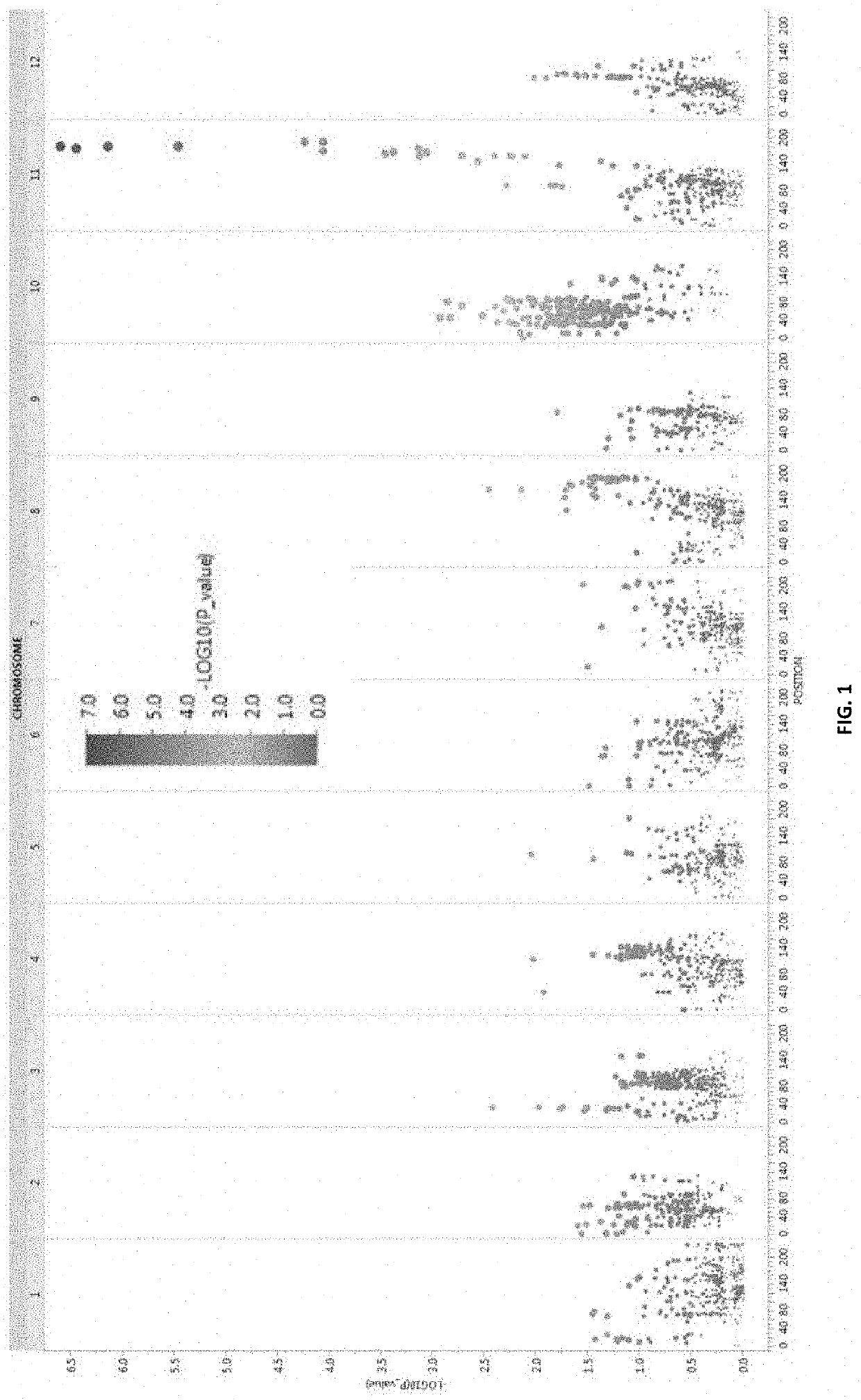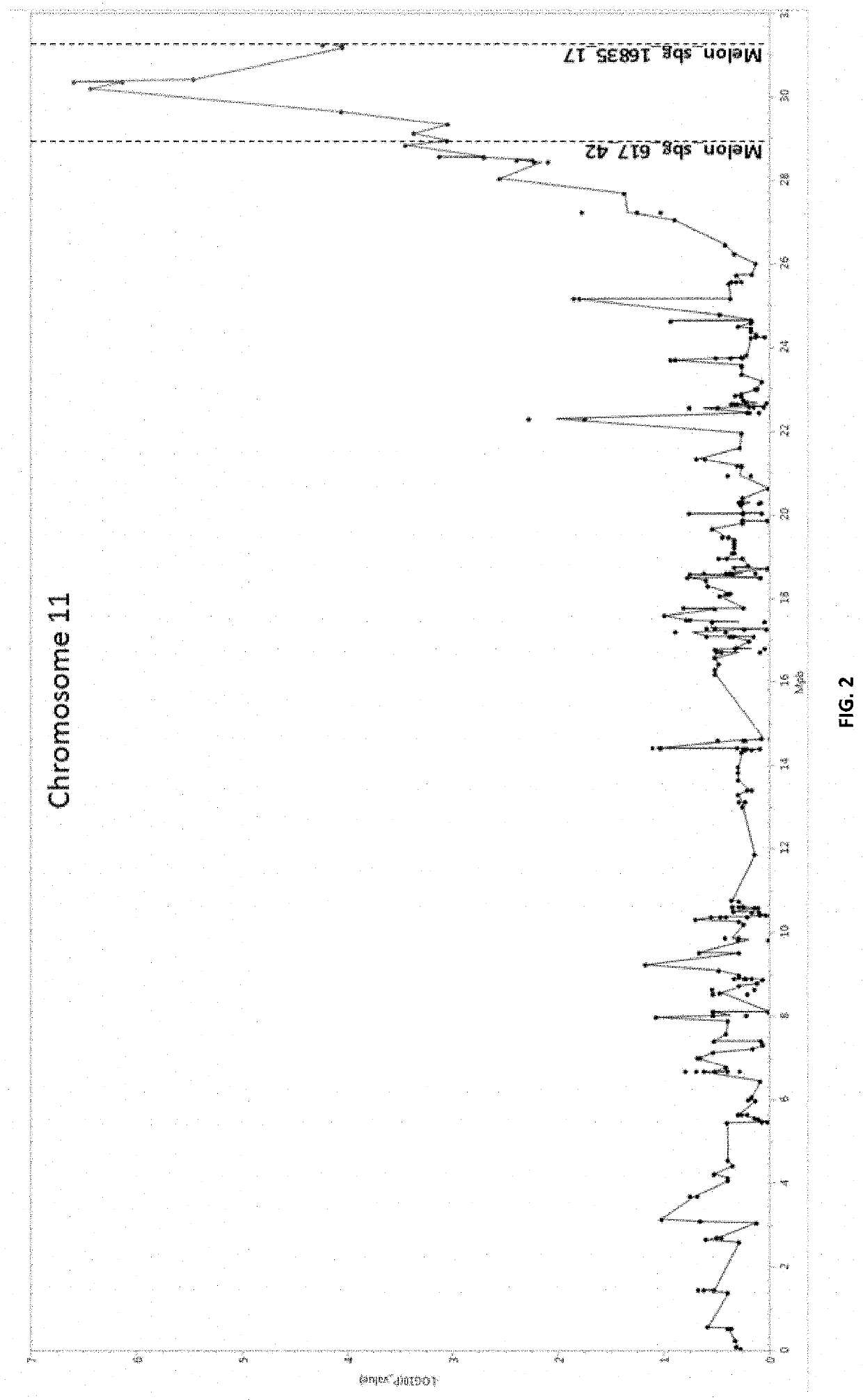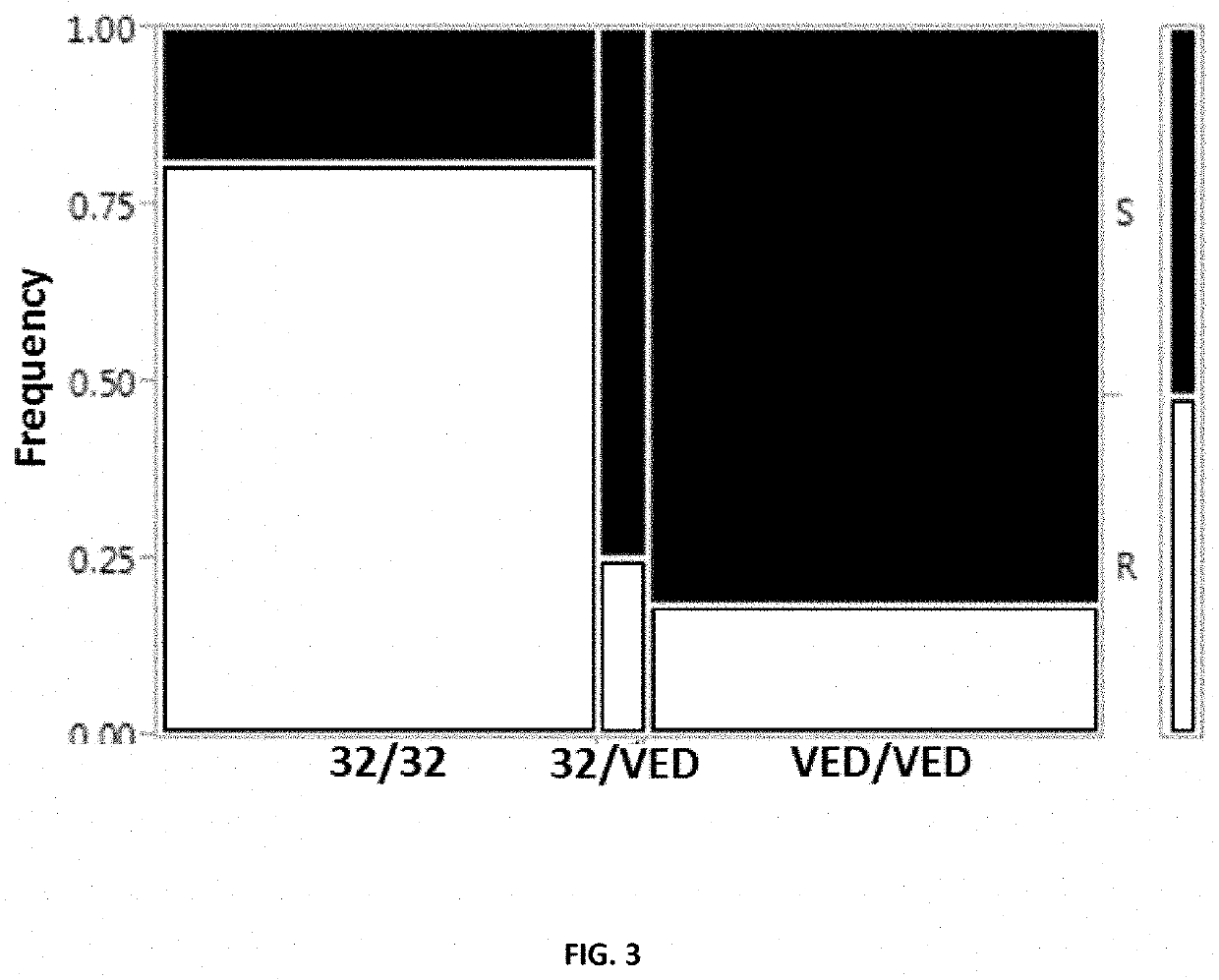Resistance to tolcndv in melons
a technology of tolcndv and melons, applied in the field of resistance to tolcndv in melons, can solve the problems of disease, large amount of crop damage worldwide, confusion of the range of variation, etc., and achieve the effect of high level of resistance to tolcndv
- Summary
- Abstract
- Description
- Claims
- Application Information
AI Technical Summary
Benefits of technology
Problems solved by technology
Method used
Image
Examples
example 1
nsect Mediated Inoculation and Disease Screening
[0206]Tomato leaf curl New Delhi virus (ToLCNDV) is caused by a whitefly transmitted geminivirus. The identification of source of resistance involves the development of a phenotyping system based on the four following aspects that have to be validated for repeatability and reliability:[0207]the virus growth and maintenance,[0208]the vector growth and maintenance,[0209]the inoculation[0210]and the scoring methodologies.
[0211]Virus Growth and Maintenance
[0212]The Tomato leaf curl New Delhi virus (ToLCNDV) was maintained on isolated infected squash plants (Cucurbita pepo) grown in an insect-proof cages, with natural lighting and temperature control (25° C. during the day and 20° C. during the night). Cultures of the ToLCNDV were maintained on susceptible squash plants (Cucurbita pepo) ‘Victoria F1” (HM.Clause) (thus confirming that the ToLCNDV is indeed a strain, giving rise to the severe symptoms described above).
[0213]It must be noted t...
example 2
echanical Inoculation
[0220]In addition to the insect mediated inoculation described in example 1, the present inventors also developed an artificial test based on mechanical inoculation. Naturally squash plants infected with ToLCNDV were collected in Almeria and the virus was isolated. Infected leaves were kept in a plastic bag at −80° C. up to their use. 1 g of infected leaves is grinded with 4 ml of a 0.03M Na2HPO4 buffer (pH9) containing 0.2% sodium diethyldithiocarbamate with carborundum (7.5%) and activated carbon (10%). Seedlings with first leaf not yet emerged are inoculated on both cotyledons by gentle rubbing and plants are rinsed after inoculation. Plants are then maintained in growth chamber with a day temperature of 25° C. for 14 hours and a night temperature of 20° C. for 10 hours. A second inoculation can be performed one week after the initial one in order to insure infection.
[0221]A first scoring is done 3 weeks after inoculation, when the susceptible check show clea...
example 3
ation of a Source of Resistance to ToLCNDV Through Insect Mediated Inoculation
[0222]As a starting point of the realization of the invention, the present inventors have conducted several experiments to screen for ToLCNDV resistance among several Cucumis melo plants, both from Cucumis melo subsp. agrestis and from Cucumis melo subsp. melo. It must be noted that, to date, Cucumis melo subsp. agrestis var. acidulous has not been identified as a possible source of resistance to ToLCNDV.
[0223]A panel of 27 commercial Cucumis melo subsp. melo hybrids as well as 8 Cucumis melo subsp. agrestis and Cucumis melo subsp. melo were screened according to the process described in Example 1. A susceptible check was added as control.
TABLE 1Plants tested for resistanceNb ofNb ofNb ofTotalPlant identifier andResistantIntermediateSusceptiblePlanttype of plants testedplantsplantsplantsnbH-MLCND-1: C. melo subsp.001010melo var. cantalupensis GaliaH-MLCND-2: C. melo subsp.0055melo var. cantalupensis GaliaH...
PUM
| Property | Measurement | Unit |
|---|---|---|
| Electrical resistance | aaaaa | aaaaa |
Abstract
Description
Claims
Application Information
 Login to View More
Login to View More - R&D
- Intellectual Property
- Life Sciences
- Materials
- Tech Scout
- Unparalleled Data Quality
- Higher Quality Content
- 60% Fewer Hallucinations
Browse by: Latest US Patents, China's latest patents, Technical Efficacy Thesaurus, Application Domain, Technology Topic, Popular Technical Reports.
© 2025 PatSnap. All rights reserved.Legal|Privacy policy|Modern Slavery Act Transparency Statement|Sitemap|About US| Contact US: help@patsnap.com



